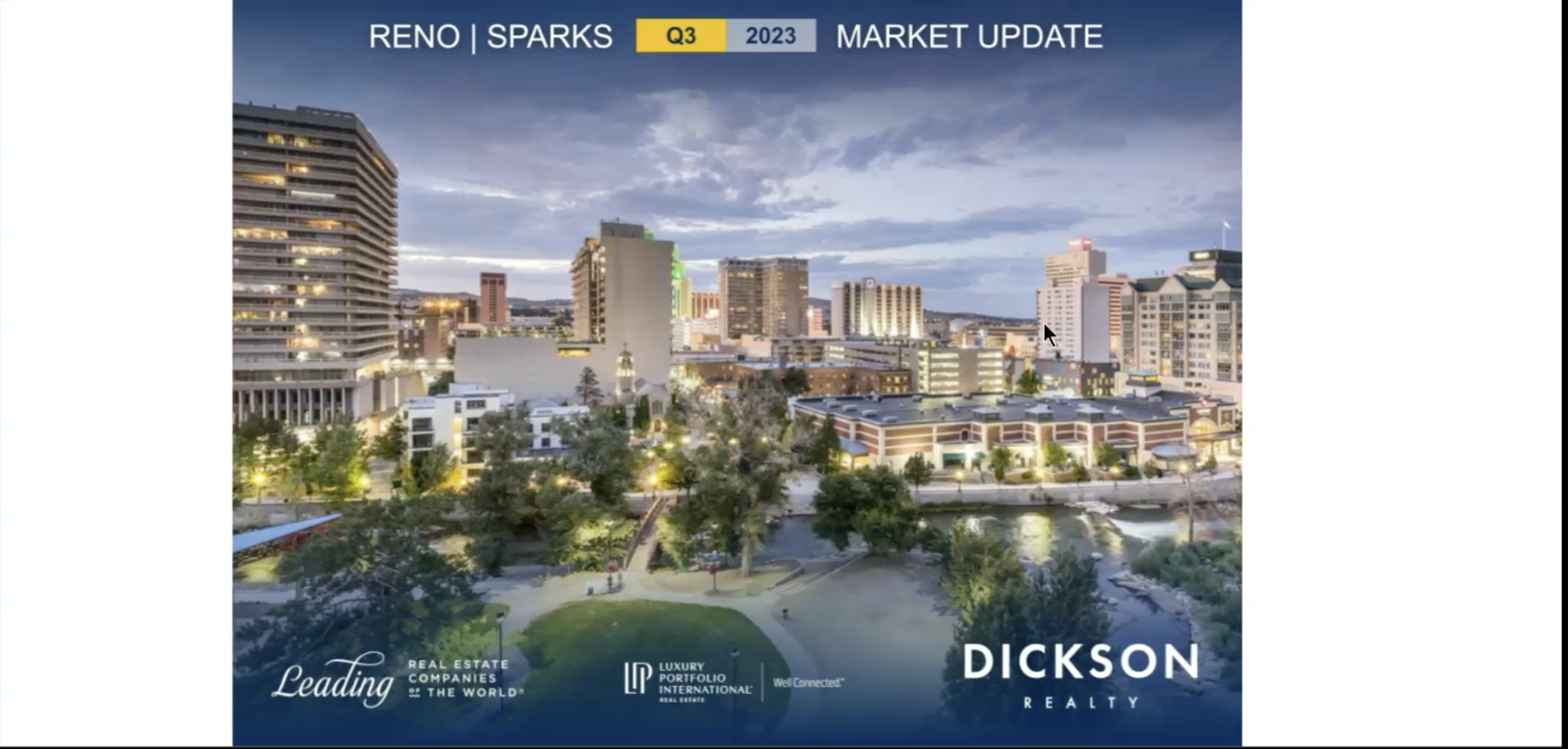Home sales nation wide have been 20-30% lower in 2023 from historical average, with less sales than pre-pandemic years. Buyer demand has been affected in both the national and Reno Sparks real estate market by two main factors this year: increasing home prices in the last three years, and rising mortgage interest rates.
During the pandemic, the average home sold for an increase of 47% over pre-pandemic sales prices. While the market is slowly stabilizing, interest rates have continued to increase. These two factors have affected affordability to the point of lowered buyer demand in the national real estate market. Broken down by region, the west coast has seen the biggest decline in homes sold since 1999—currently sitting at 38% below average. Locally, the Reno Sparks real estate market is feeling the decrease in buyer demand but remaining stable as home inventory levels also maintain at lower-than-average levels.
Dive into the details with me in the Third Quarter Market Update
Reno Sparks Real Estate Market Trends
- September saw a median sales price of $574,000, a decrease of 0.2% month-over-month but an increase of 8% year-over-year.
- 371 homes were sold in the Reno Sparks area in September, a significant decrease of 13% month-over-month and 21% year-over-year. The area’s seasonal market accounts for part of this decrease, while affordability factors are likely causing the rest of it.
- 357 new homes entered contract in September, a decrease of 7.8% month-over-month. Similarly, new listings decreased 22% month-over-month to a total of 412 new listings in the Reno Sparks real estate market in September. New listings will continue to decrease through the end of the year due to the seasonality of the market, which will help stabilize pricing in the market.
- The Reno Sparks market is sitting at roughly half of pre-pandemic inventory rates. 834 homes were in active inventory in September, only a 2.8% decrease month-over-month, but a 39.2% decrease year-over-year. As active inventory levels climb, the market will see declining prices in quarter four, which is typical for the area.
- Days to contract came in at an average of 22 days for the local market in September. Increased from August by 29.4%, the slowdown in days to contract is likely coming from buyers offering less on listings.
- Month-over-month, the over ask analysis has decreased by 0.1%, bringing our average to 98.8%. While this decrease isn’t overtly significant, it does come on the heels of a five-month downward trend, indicating the local market is slowing down.
National Real Estate Market Trends
- The third quarter of 2023 saw regional decreases in home sales, with a 38% decrease in the West, 19% in the Midwest, 19% in the South, and 35% in the Northeast.
- August home sales were down 24% from historic national average. As we transition into fall and winter, demand drops significantly, making this partially expected.
- Mortgage delinquency rates have up ticked slightly to 3.17% nationally. While that is an increase, this rate is below the national average for the last 22 years, indicating a healthy real estate market overall.



